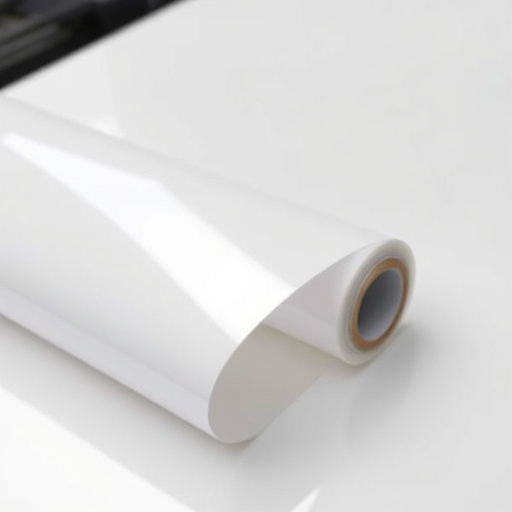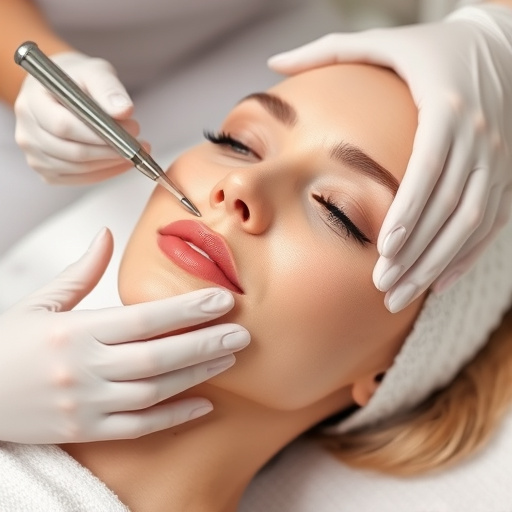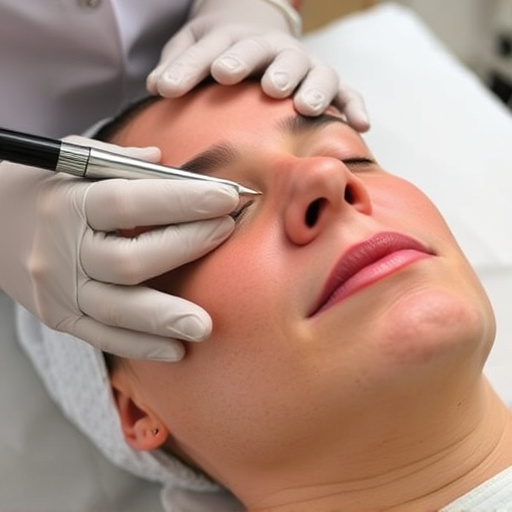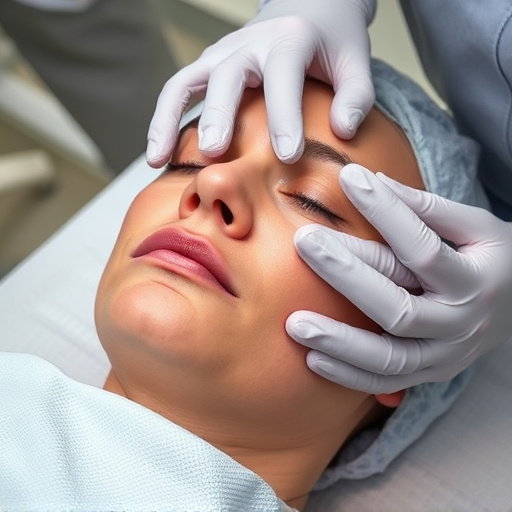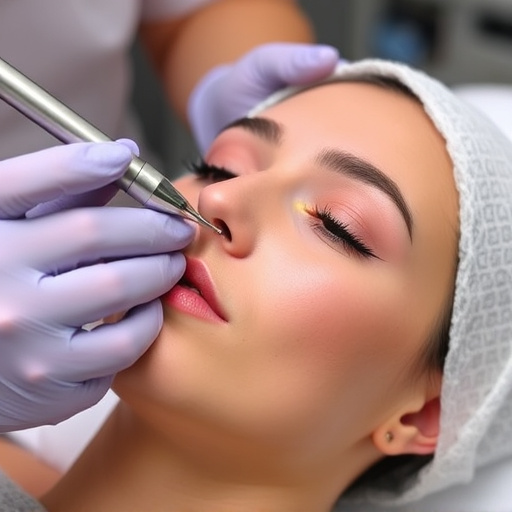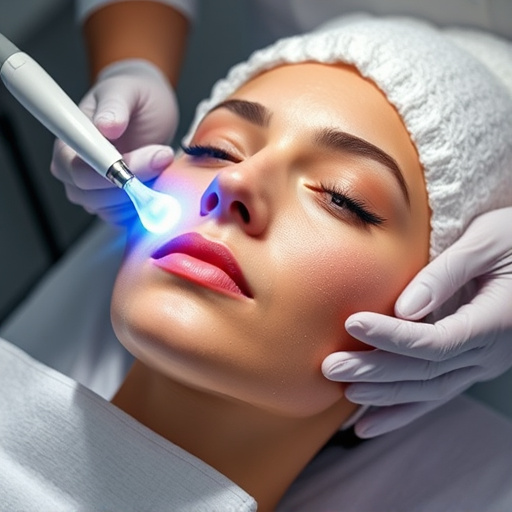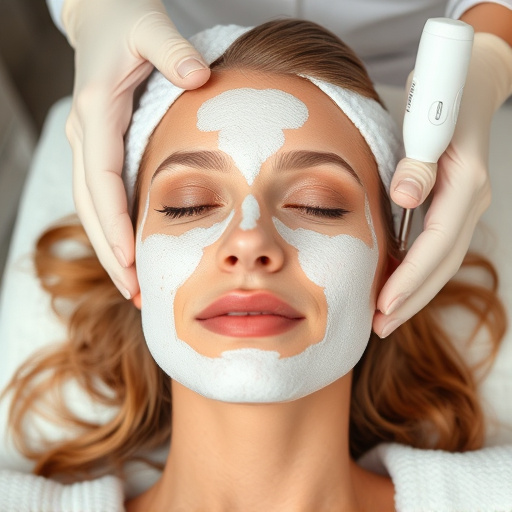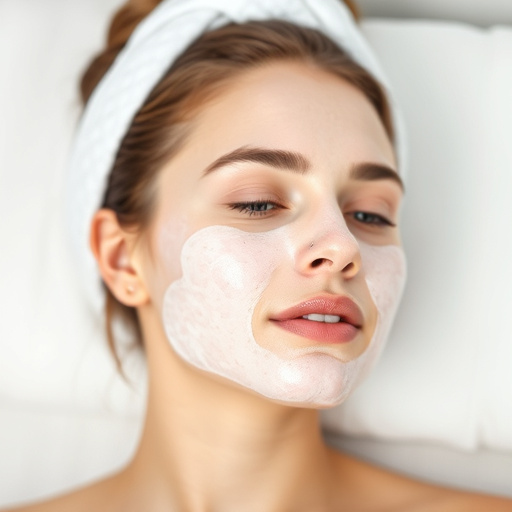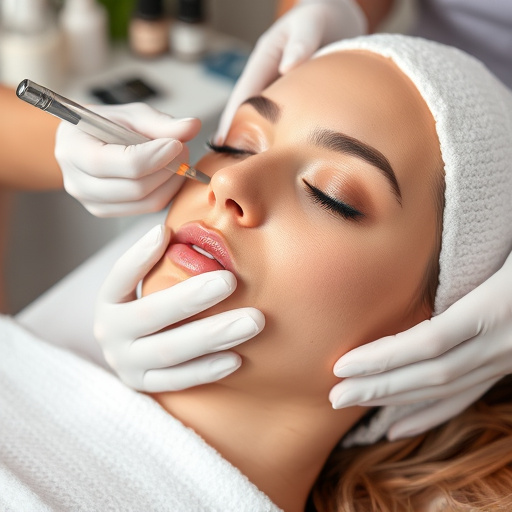A lactic acid peel is a non-invasive skincare treatment for wrinkles, scars, and hyperpigmentation, stimulating new cell growth and collagen production. Post-peel skin may experience redness, irritation, and flaking for 2-3 days, but proper care with gentle products and sun protection leads to smoother, brighter skin. Consistency in skincare routines enhances results.
Discover the revealing truth behind peeling after lactic acid treatments. This comprehensive guide explores the intricate process of lactic acid peels, unveiling common side effects and their timelines. Learn effective post-peel care strategies for optimal results. Understanding these key aspects ensures a smoother experience and enhances the benefits of your lactic acid peel.
- Understanding Lactic Acid Peel Process
- Common Side Effects and Their Timelines
- Effective Post-Peel Care Strategies
Understanding Lactic Acid Peel Process

A lactic acid peel is a popular professional skincare treatment used for various skin concerns, including acne scars, hyperpigmentation, and fine lines. This procedure involves applying a concentrated solution of lactic acid to the skin’s surface, which gently exfoliates dead skin cells while stimulating new cell growth. Lactic acid, a natural alpha hydroxy acid (AHA), is known for its ability to enhance skin texture and promote a youthful appearance by accelerating natural regeneration processes.
The process begins with preparing the skin through cleansing and application of topical numbing agents to ensure patient comfort. Then, the lactic acid solution is carefully applied, often in layers, to allow for maximum penetration. As the acid works its magic, it gently removes superficial impurities while stimulating collagen production, resulting in improved skin tone, reduced wrinkles, and a smoother, more even complexion. This anti-aging treatment option is favored by many professionals due to its ability to offer significant wrinkle reduction without invasive procedures.
Common Side Effects and Their Timelines
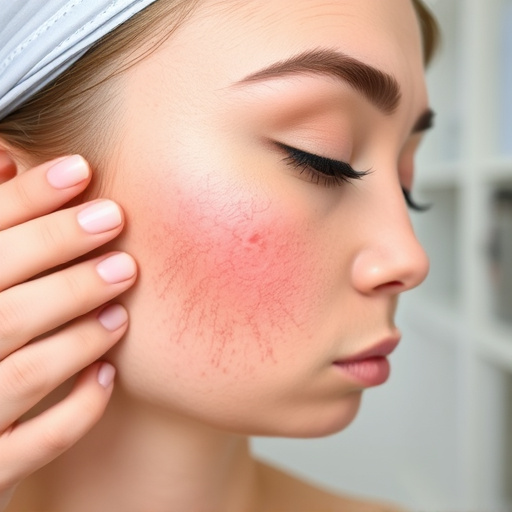
After a lactic acid peel, it’s common to experience several side effects, which can provide valuable insights into your skin’s transformation process. One of the most noticeable is temporary redness and irritation, often accompanied by a mild tingling sensation. This typically peaks within 24-48 hours after the treatment and should subside within a few days. During this period, it’s crucial to maintain a gentle skincare routine, avoiding harsh products that might exacerbate the sensitivity.
Another side effect worth noting is peeling or flaking of the skin, which can begin as early as one day post-treatment and last for up to a week. This natural process helps remove dead skin cells, allowing for the revealing of smoother, brighter skin underneath. While it may seem concerning, this is actually a positive sign of effective lactic acid peel action, leading to enhanced skin rejuvenation and personalized skincare results in a medical spa setting.
Effective Post-Peel Care Strategies

After a lactic acid peel, proper post-care is essential for optimal results and to prevent complications. The first few days are crucial; avoid harsh cleansers and opt for gentle, hydrating products to soothe and support your skin’s recovery. Applying a good moisturizer can help reduce flaking and irritation while promoting skin healing. Additionally, sun protection is vital; use a broad-spectrum sunscreen with at least SPF 30 to shield your skin from UV damage, as it may be more sensitive post-peel.
Consider incorporating a gentle, chemical-free facial cleanser and a hydrating serum into your skincare routine after the peel. Some people also find relief using a cold compress for mild inflammation. For those interested in enhancing results, laser hair removal can complement lactic acid peels by reducing hair growth, while skin brightening treatments can further improve overall skin tone and texture. Remember, consistency is key; maintain a regular skincare regimen to ensure your skin stays healthy and radiant.
A lactic acid peel can be a powerful tool for achieving smoother, more radiant skin, but understanding the post-treatment process is key. By being aware of potential side effects like redness, peeling, and sensitivity, and implementing effective post-peel care strategies, including hydration and gentle skincare routines, you can maximize the benefits of this procedure. Remember, proper aftercare ensures your skin recovers healthily, revealing its enhanced texture and tone.
